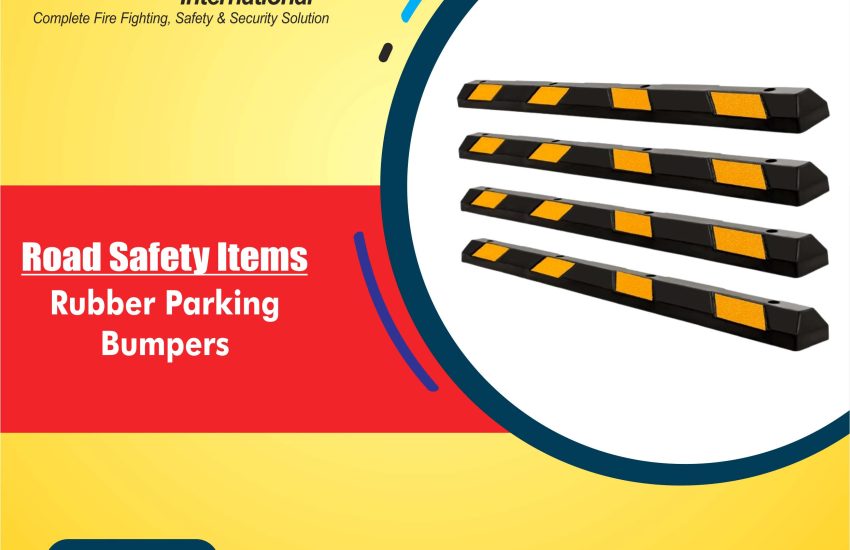Rubber Parking Bumpers provide a simple yet highly effective solution for improving parking lot safety and protecting vehicles. These durable, weather-resistant bumpers guide drivers and protect vehicles from accidental collisions. Made from high-quality rubber, they are perfect for both indoor and outdoor parking spaces. In this comprehensive guide, we’ll cover the benefits, types, installation process, and maintenance of rubber parking bumpers. This guide will help you make the best choice for your parking lot.
What Are Rubber Parking Bumpers?
Rubber Parking Bumpers are flexible, resilient barriers that keep vehicles within their designated parking spaces. Placed at the end of parking spots, these bumpers prevent cars from rolling into walls, curbs, or other vehicles. Made from tough rubber, these bumpers absorb impacts and provide protection without damaging the vehicles or the surrounding area.
The flexible nature of rubber ensures that these bumpers can withstand a variety of weather conditions. They are reliable and built to last in both hot and cold climates, making them an excellent long-term investment.
Benefits of Rubber Parking Bumpers
- Durability and Weather Resistance
Rubber parking bumper are designed to endure harsh weather conditions. Whether it’s rain, snow, or extreme heat, they resist cracking and degradation. This makes them perfect for both indoor and outdoor parking spaces. - Protection for Vehicles
These bumpers protect vehicles by preventing collisions with walls, columns, or other structures. They also guide drivers to park correctly, reducing the chances of damage to both vehicles and the surrounding infrastructure. - Cost-Effective
Rubber parking bumper are more affordable than concrete or metal alternatives. Additionally, their long-lasting durability reduces the need for frequent replacements, making them a cost-effective choice for parking lot owners. - Eco-Friendly
Many rubber parking bumper are made from recycled rubber. Choosing these bumpers not only helps you reduce waste but also supports environmentally sustainable practices. - Easy Installation
Installing rubber parking bumper is quick and easy. Since most bumpers come with pre-drilled holes, setting them up takes little effort. This reduces the need for specialized equipment, saving time and money.
Types of Rubber Parking Bumpers
- Standard Rubber Parking Bumpers
These are the most common type of rubber parking bumper. They typically come in a rectangular or cylindrical shape and are placed at the end of parking spaces. Standard bumpers are effective for preventing vehicles from rolling forward. - Heavy-Duty Rubber Parking Bumper
Heavy-duty rubber bumper are designed for high-traffic areas or locations with larger vehicles. They are thicker and more robust, providing enhanced durability and resistance to impact. - Curved Rubber Parking Bumpers
Curved rubber parking bumper are ideal for parking lots with curved layouts. These bumpers ensure smooth transitions around corners, improving both safety and aesthetics. - Wheel Stops or Parking Blocks
Wheel stops (also known as parking blocks) are smaller rubber bumper designed to prevent vehicles from moving too far forward or backward. These bumpers are particularly useful in narrow or tight parking spaces. - Reflective Rubber Parking Bumpers
Reflective rubber bumper feature built-in reflective strips or panels, improving visibility in low-light conditions. These bumpers are especially useful in areas with poor lighting or for nighttime use.
How to Install Rubber Parking Bumpers
- Choose the Right Rubber Bumper
First, select the appropriate type of rubber bumper for your parking area. Consider factors like traffic volume, weather conditions, and vehicle size to choose the most suitable option. - Prepare the Area
Before installation, clear the parking space of any debris. Make sure the surface is clean and level, which will help ensure a secure fit for the bumpers. - Position the Bumper
Next, place the rubber bumper in the desired location, usually at the end of parking spaces. Be sure to align the bumper properly to ensure it functions correctly. - Secure the Bumper
Most rubber bumpers come with pre-drilled holes for easy installation. Secure the bumper to the ground with screws or bolts. Tighten them to ensure the bumper stays in place. - Test the Alignment
After installation, check the bumper’s position to ensure it’s aligned properly. If needed, adjust the placement to make sure it works as intended.
Maintaining Rubber Parking Bumpers
- Clean Regularly
To keep rubber parking bumper in optimal condition, clean them regularly. Use a hose or pressure washer to remove dirt, oil, or debris that may affect their performance. - Inspect for Damage
Regularly inspect the bumpers for signs of wear and tear, such as cracks or tears. If any bumper is damaged, replace it immediately to maintain safety. - Reposition if Necessary
Occasionally, bumpers may shift due to vehicle impacts. If this happens, reposition the bumpers to ensure they continue to provide effective protection. - Check Reflective Features
If your bumpers include reflective strips, inspect them for fading or damage. Replace any worn-out reflective materials to ensure visibility, especially at night.
Conclusion
Rubber parking bumper are an essential investment for improving parking lot safety. They are durable, cost-effective, and environmentally friendly. Whether you need standard bumper, heavy-duty options, or reflective models, rubber parking bumper offer reliable and effective protection for vehicles and infrastructure.


